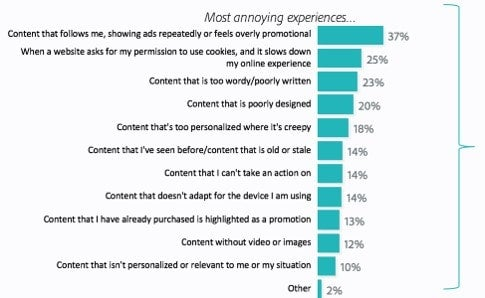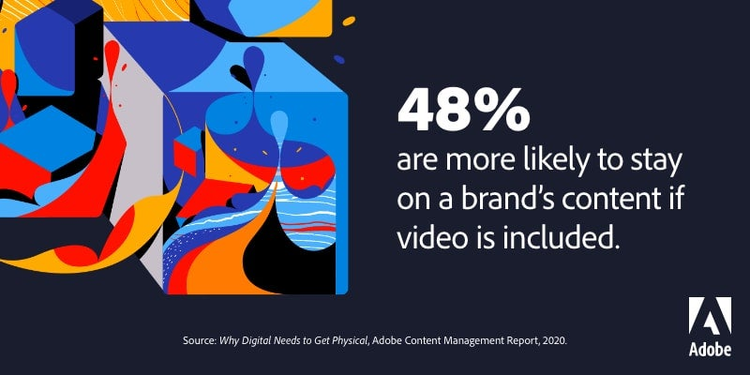A new study by Adobe quantifies the expectations consumers expect from brands.
Whether online or off, it’s no secret that consumers continue to expect more from the experiences they have with brands.
A new study by Adobe quantifies those expectations, finding that 61% of the 1,585 U.S. consumers surveyed said they would stop engaging with brands that offer frustrating experiences. Among their overall complaints: spam email, pop-ups, slow page loads, and expired special offers.
And when asked specifically about personalization, the No. 1 complaint from consumers is content that follows them online and continues to show the same ads.
“Our findings this year cement the notion that consumers do not want to feel as if they are being sold to,” said Loni Stark, senior director, content and commerce at Adobe. “They want to get value out of their engagements with companies, and they do not appreciate unwelcomed or irrelevant content. Their time is precious, so don’t waste it.”
The good news is that it appears brands are keyed in on people’s growing expectations. In fact, in a separate survey of 400 U.S. marketers at midsize organizations, Adobe found that 91% of the companies said they personalize their content to some extent in an effort to improve customer experience (CX). More than half of midsize organizations update their websites daily or more, and 90% would like to update them more frequently but lack the resources to do so. Finally, the study found, most organizations are using data to drive their websites’ content strategy.
As for the content that resonates with consumers most, video takes first place, according to the study. Nearly half (48%) of people are more likely to stay engaged with a brand’s content if video is included as part of the experience.
“There’s no arguing the effectiveness of sight, sound, and motion when it comes to captivating an audience and keeping them engaged,” Adobe’s Stark said. “We’ll see brands continue to double down on video this year and beyond as a means of building relationships and also moving customers through the purchase funnel.”
Content + Commerce
The research also looked into the role content plays in brick-and-mortar shopping, which, according to the study, accounts for the majority of purchases (65%) made by consumers of all ages. But even in-store, digital plays a role for just about half of the people surveyed, who said they have turned to their smartphones or another connected device to inform their purchase decisions. Comparing prices and searching for promotions were among the reasons people use a mobile device in store, as was checking reviews.
Mobile, Stark said, is truly empowering consumers to make more educated decisions when they are in a store. “The in-store experience is becoming more digital as the younger generations, like Millennials and Gen Z, do their product research in the moment,” she said. “It’s ironic because when we talk about digital transformation, there’s been a big focus on the online channels at the expense of in-store. I think over the next couple of years, we’re going to see massive transformations in brick-and-mortar.”
We’ve already seen it with top brands like Nike, whose New York flagship store is packed with digital technology that immerses people in the brand. While not commonplace yet, it is the direction brick-and-mortars are heading, as digital in-store touch points help connect the physical and online experience, Stark said.
Post-Purchase Feedback
Another reason for brands to get CX right: Today’s consumers are more likely to call a brand out for missing the mark. Younger consumers, the study found, are significantly more likely than older consumers to share their feedback—both positive and negative—after a purchase. For all groups, however, brand websites, online review sites, and social media are the top channels for positive feedback, with direct connection (email or phone) most common for negative feedback.
“We’re in the Golden Age of marketing right now, where technology has empowered marketers to be more creative and deliver more differentiated customer experiences than ever before,” Stark said. “The companies that are going to be effective, as the survey shows, are the ones that truly connect with their customer across channels in an omnichannel way and add value.”




